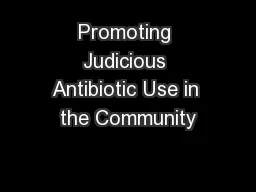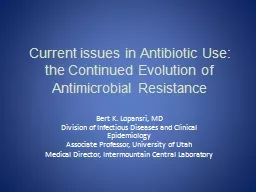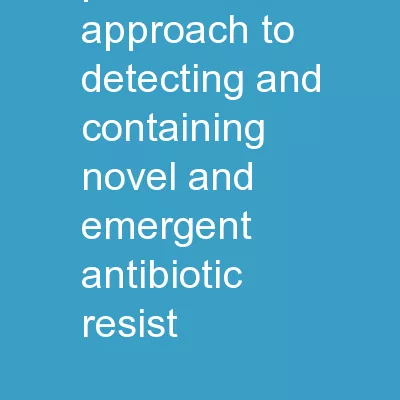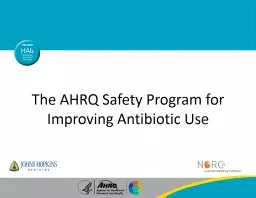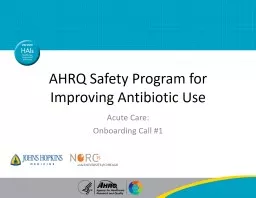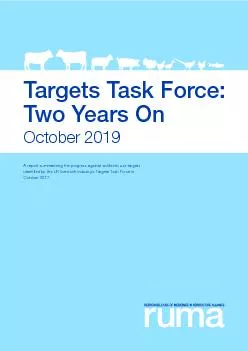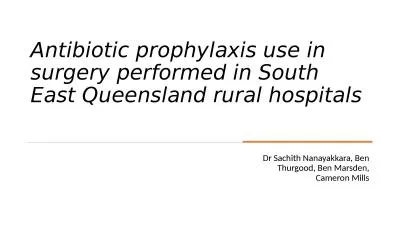PPT-Promoting Judicious Antibiotic Use in the Community
Author : aaron | Published Date : 2018-12-08
Overview Discuss antibiotic resistance in the United States Summarize recent national policy developments Describe the Get Smart Know When Antibiotics Work program
Presentation Embed Code
Download Presentation
Download Presentation The PPT/PDF document "Promoting Judicious Antibiotic Use in th..." is the property of its rightful owner. Permission is granted to download and print the materials on this website for personal, non-commercial use only, and to display it on your personal computer provided you do not modify the materials and that you retain all copyright notices contained in the materials. By downloading content from our website, you accept the terms of this agreement.
Promoting Judicious Antibiotic Use in the Community: Transcript
Download Rules Of Document
"Promoting Judicious Antibiotic Use in the Community"The content belongs to its owner. You may download and print it for personal use, without modification, and keep all copyright notices. By downloading, you agree to these terms.
Related Documents

